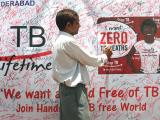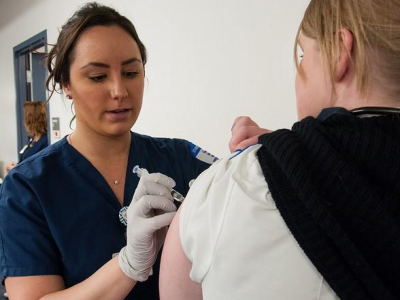The latest global tuberculosis (TB) report from the World Health Organization (WHO) contains some encouraging news, but WHO officials warn that the gains made against the world's leading infectious disease killer could be wiped out by funding cuts.
The WHO Global TB Report 2025, released today, shows the rate of people contracting TB fell by 2% from 2023 to 2024, and the number of people dying from TB fell by 3%. While the overall numbers from 2024 are still staggering—an estimated 10.7 million people fell ill with TB, and 1.2 million died from the disease—the WHO said the decline in infections and deaths suggests that health services have recovered from the disruptions caused by COVID-19. It's the first report in 3 years to show a decline in new TB cases.
"The data show that global efforts are beginning to turn the tide, with the TB burden and death declining for the first time since the COVID 19 pandemic," Tereza Kasaeva, MD, PhD, director of the WHO Department for HIV, TB, Hepatitis and STIs, said at a press briefing.
The report highlights other positive trends. An increase in the number of people reported as newly diagnosed as having TB—from 8.2 million in 2023 to 8.3 million in 2024—indicates that more people are getting diagnosed and receiving treatment. In addition, the percentage of people diagnosed using rapid TB tests rose from 48% to 54%, suggesting more people are getting appropriate treatment sooner, which reduces transmission.
The report also showed a decrease in the number of people developing drug-resistant (DR)-TB, an improvement in the treatment success rate for DR-TB, an increase in the number of people at high risk of TB receiving preventive treatment, and a thriving pipeline of new diagnostic tests, drugs, and vaccines.
'Progress is not victory'
Some regions are making significant progress against TB. According to the report, the WHO African Region saw a 28% reduction in TB incidence and 46% reduction in TB deaths from 2015 through 2024, while Europe achieved reductions of 39% and 49%, respectively. Over that same period, 101 countries achieved reductions of at least 20% in TB incidence, and 65 saw a 35% decline in TB deaths—the first milestones in the WHO's End TB Strategy.
But overall, progress toward the End TB Strategy milestones is lagging. For example, the 29% global reduction in TB deaths from 2015 through 2024 is far from the goal of a 75% reduction by 2025, and the 12% reduction in TB incidence is short of the targeted 50% reduction.
"The progress is still far short of meeting global targets, so it's fairly clear we need to do significantly more," said Yogan Pillay, PhD, director for HIV and TB delivery at the Gates Foundation, who joined Kasaeva at the press briefing.
In particular, more needs to be done in the countries most affected by TB. Kasaeva noted that just five countries—China, India, Indonesia, Pakistan, and the Philippines—accounted for more than half of global TB cases in 2024. Thirty countries accounted for 87% of the global total.
The data show that global efforts are beginning to turn the tide, with the TB burden and death declining for the first time since the COVID 19 pandemic.
In a news release, WHO Director-General Tedros Adhanom Ghebreyesus, PhD, celebrated the declines in TB incidence and deaths and the progress in testing and treatment but said, "Progress is not victory."
"The fact that TB continues to claim over a million lives each year, despite being preventable and curable, is simply unconscionable," he said.
Funding shortfalls and excess deaths
Moreover, the progress is imperiled by continued funding shortfalls. The report notes that funding for TB has stagnated since 2020 and that the $5.9 billion available in 2024 for TB prevention, diagnosis, and treatment was just over a quarter of the $22 billion annual target. The $1.2 billion raised for TB research was only 24% of the annual target.
And that shortfall doesn't account for the shutdown of the US Agency for International Development (USAID) by the Trump administration earlier this year. Before its dismantling, USAID was the leading bilateral donor for global TB programs, accounting for roughly one-third of international funding for the disease. In 2024, USAID committed $406 million to TB programs worldwide.
Although the US State Department will likely continue to provide some funding for TB through contributions to the Global Fund, how the gap from the loss of USAID funding will be filled is unclear, especially in the low- and middle-income countries most affected by the disease. Other countries that have contributed to global TB programs are also pulling back funding amid economic challenges.
The WHO says it is gathering information but that it's too early to assess the impact of the cuts in international donor funding. In a modeling study published in September in the journal PLOS Global Health, however, researchers projected that, in the 26 high-burden countries that have been reliant on USAID funding for TB programs, a long-term funding gap could result in an additional 10.7 million TB cases and 2.2 million deaths over the next five years.
"Even short-term disruptions to funding could lead to hundreds of thousands of excess deaths," said Kasaeva. "Strong political leadership and increased domestic investments in high-burden countries are now absolutely critical. The choices made today will determine whether we accelerate progress or allow hard-won gains to slip away."



















